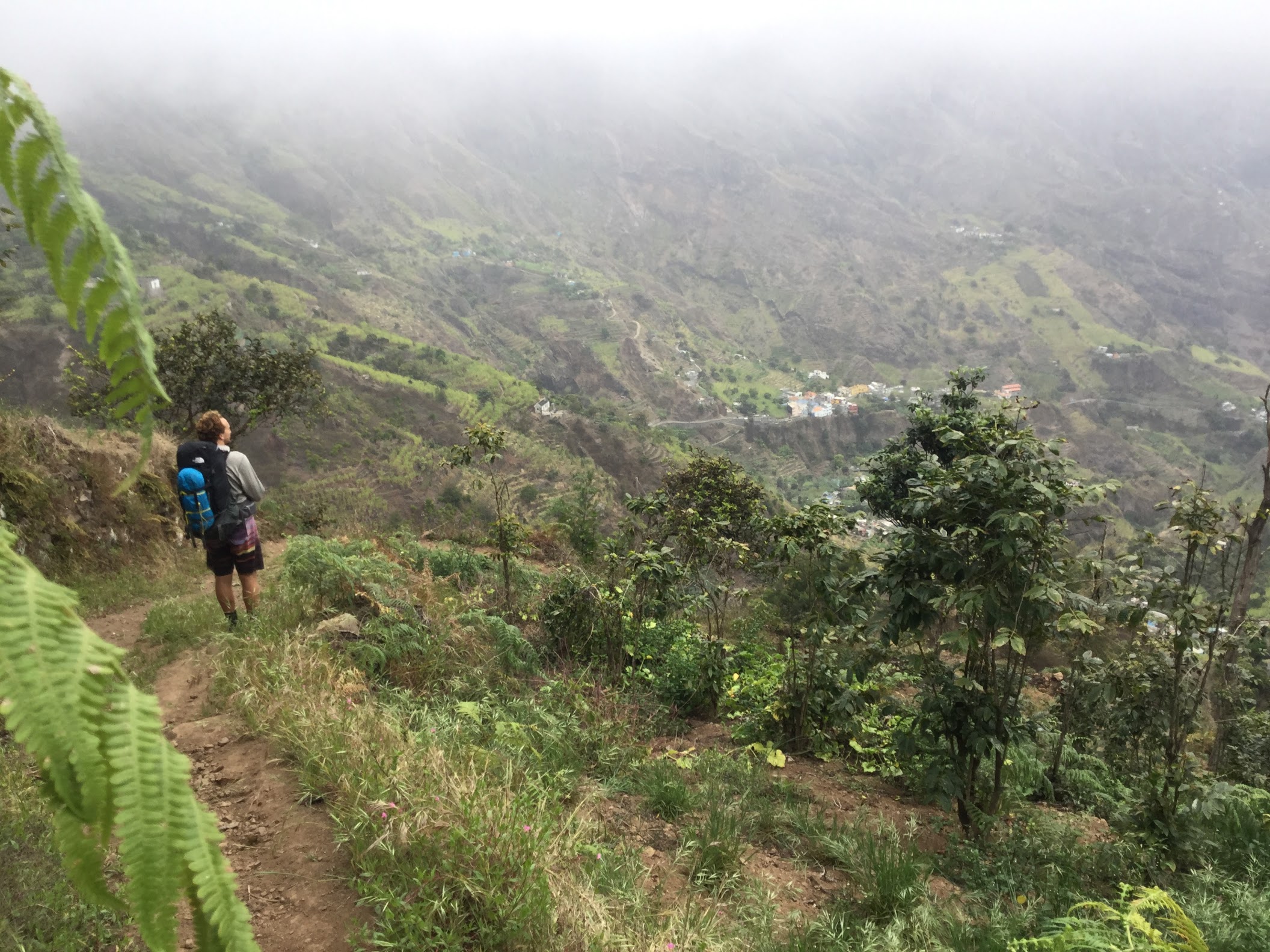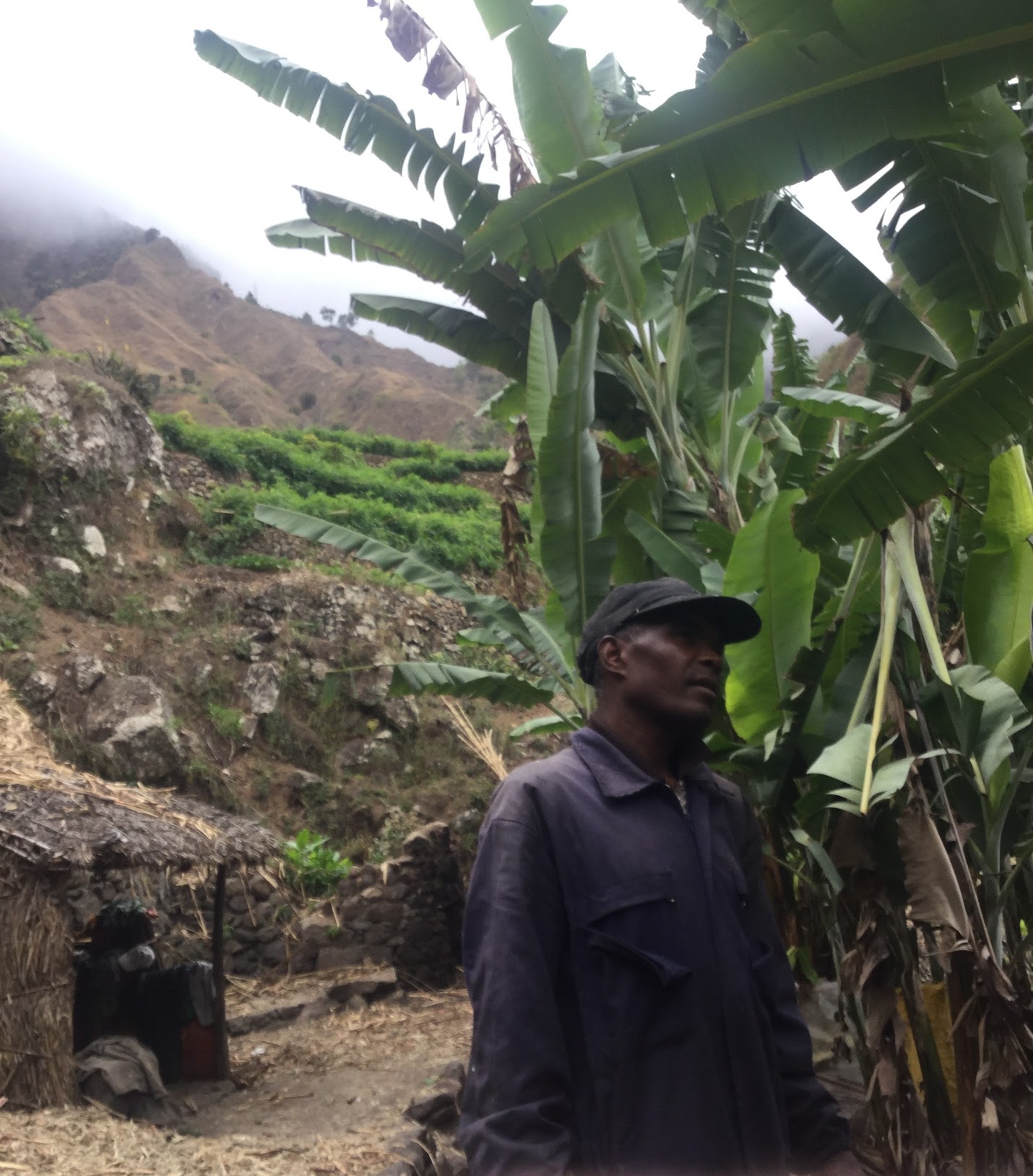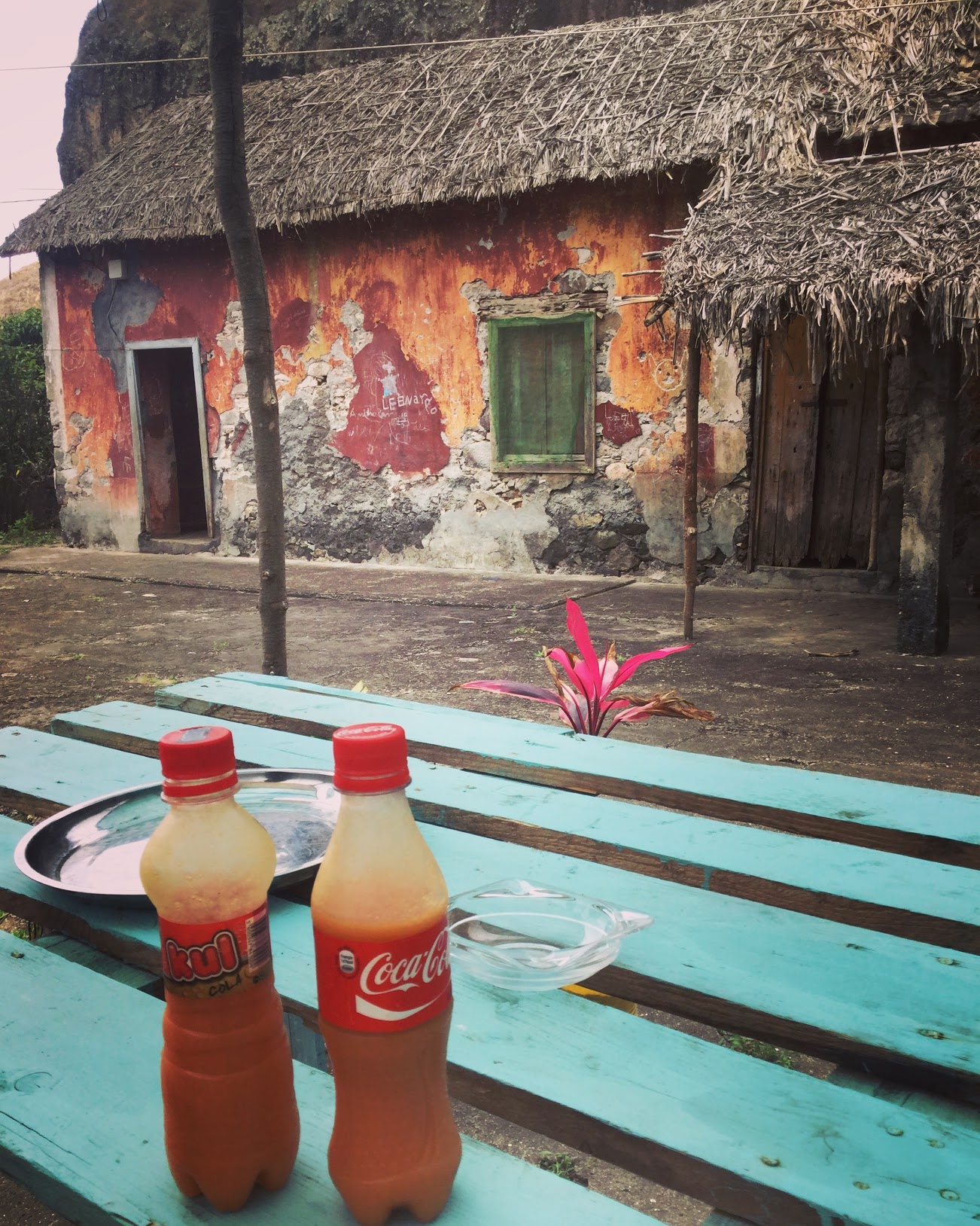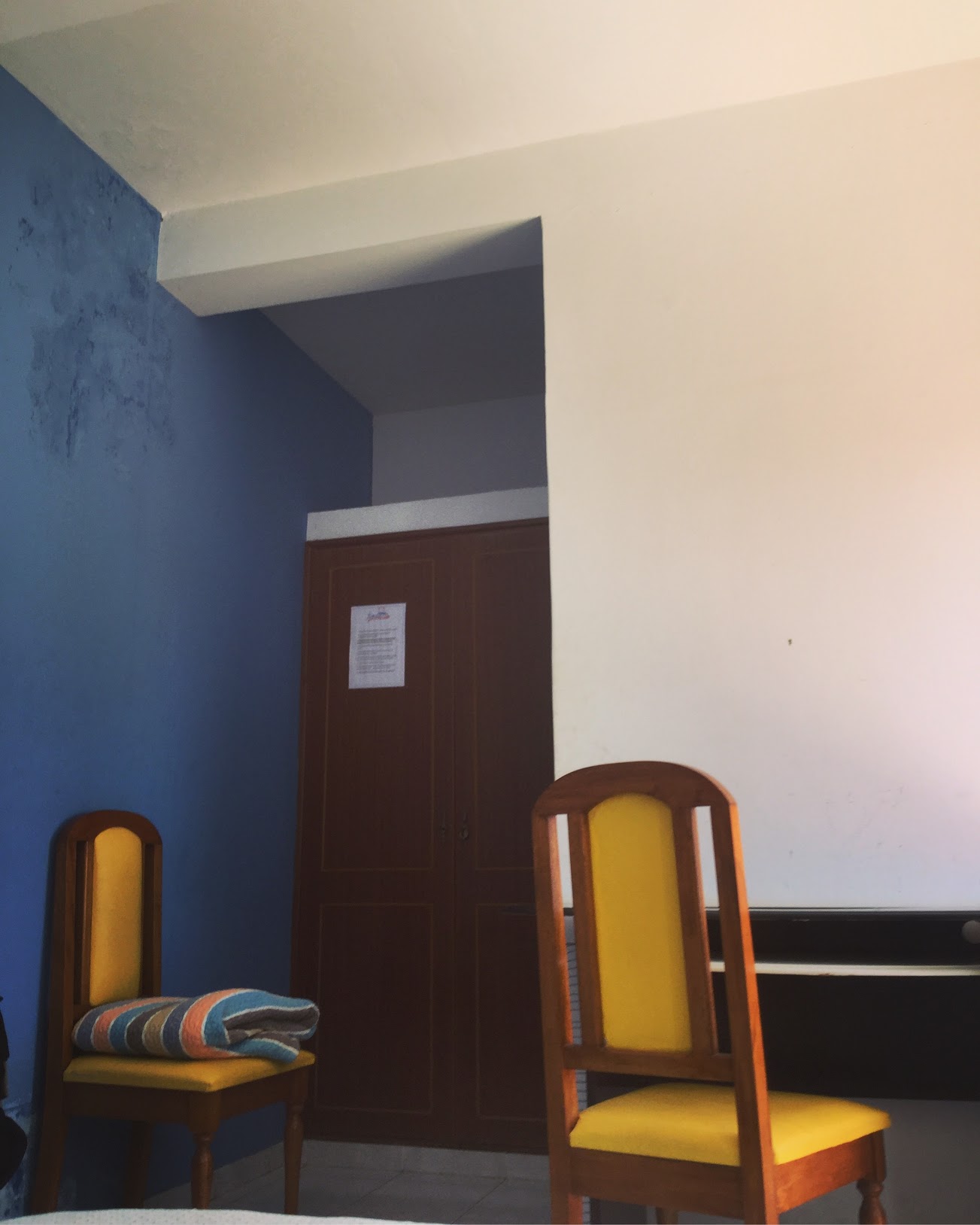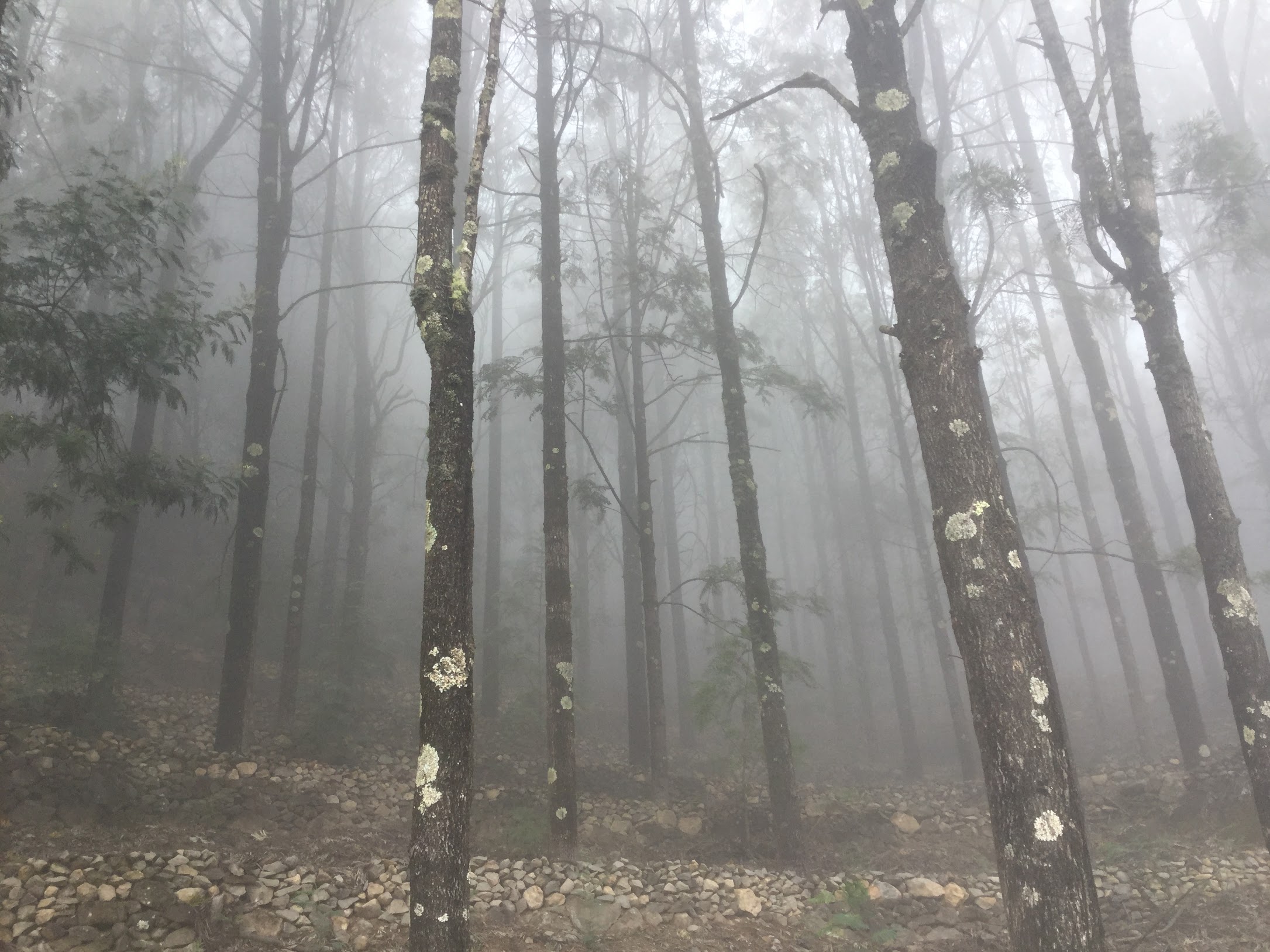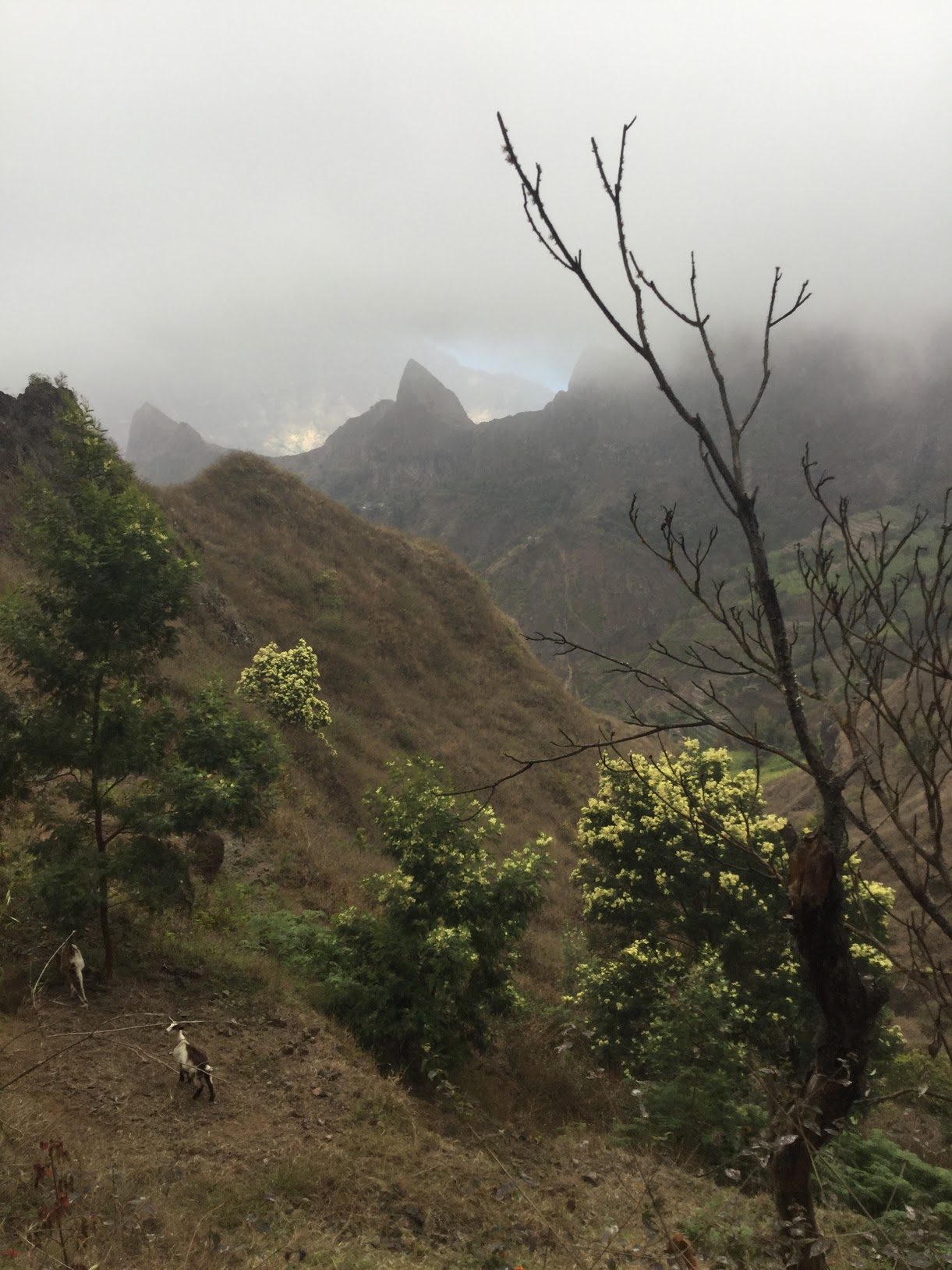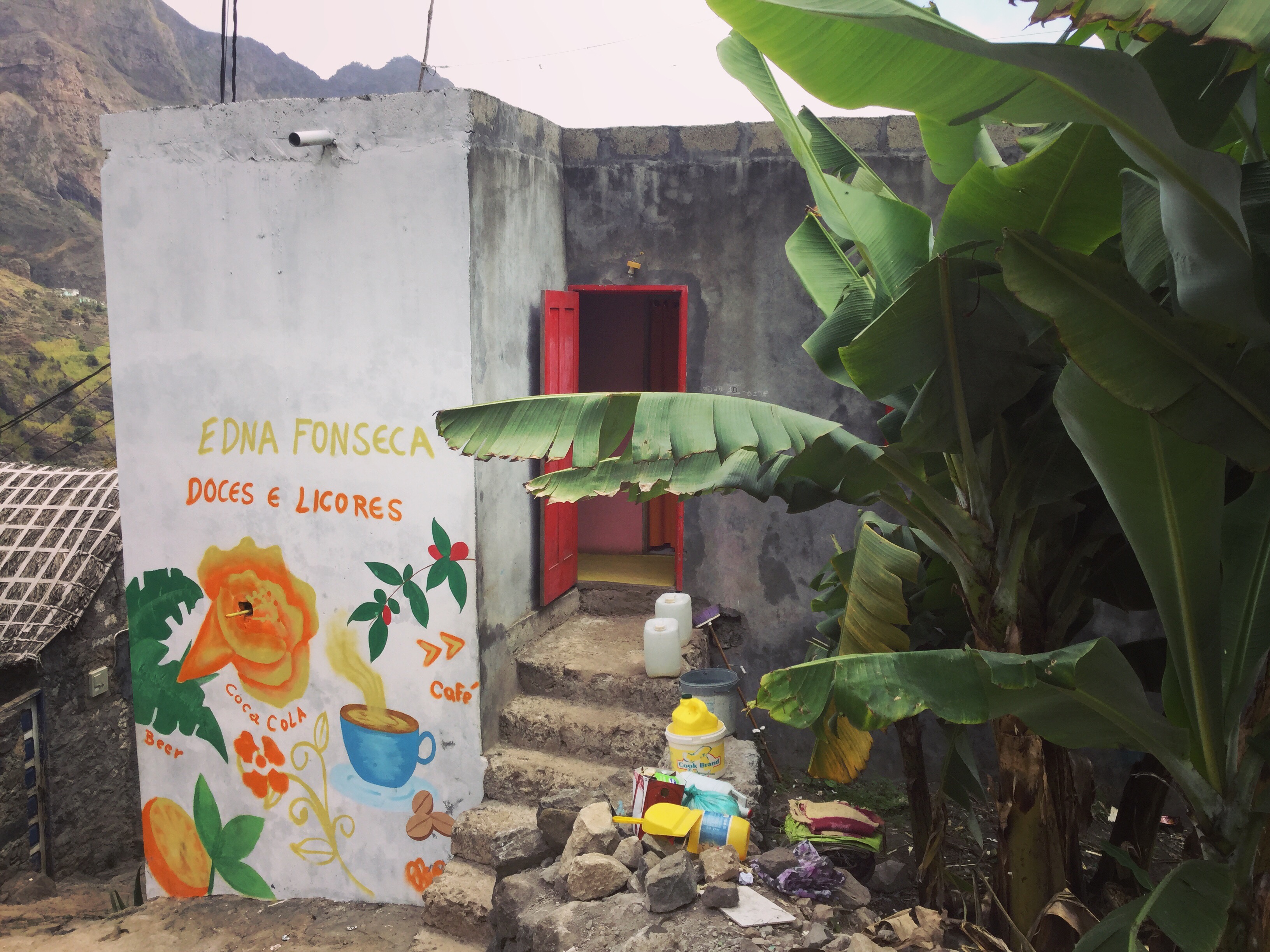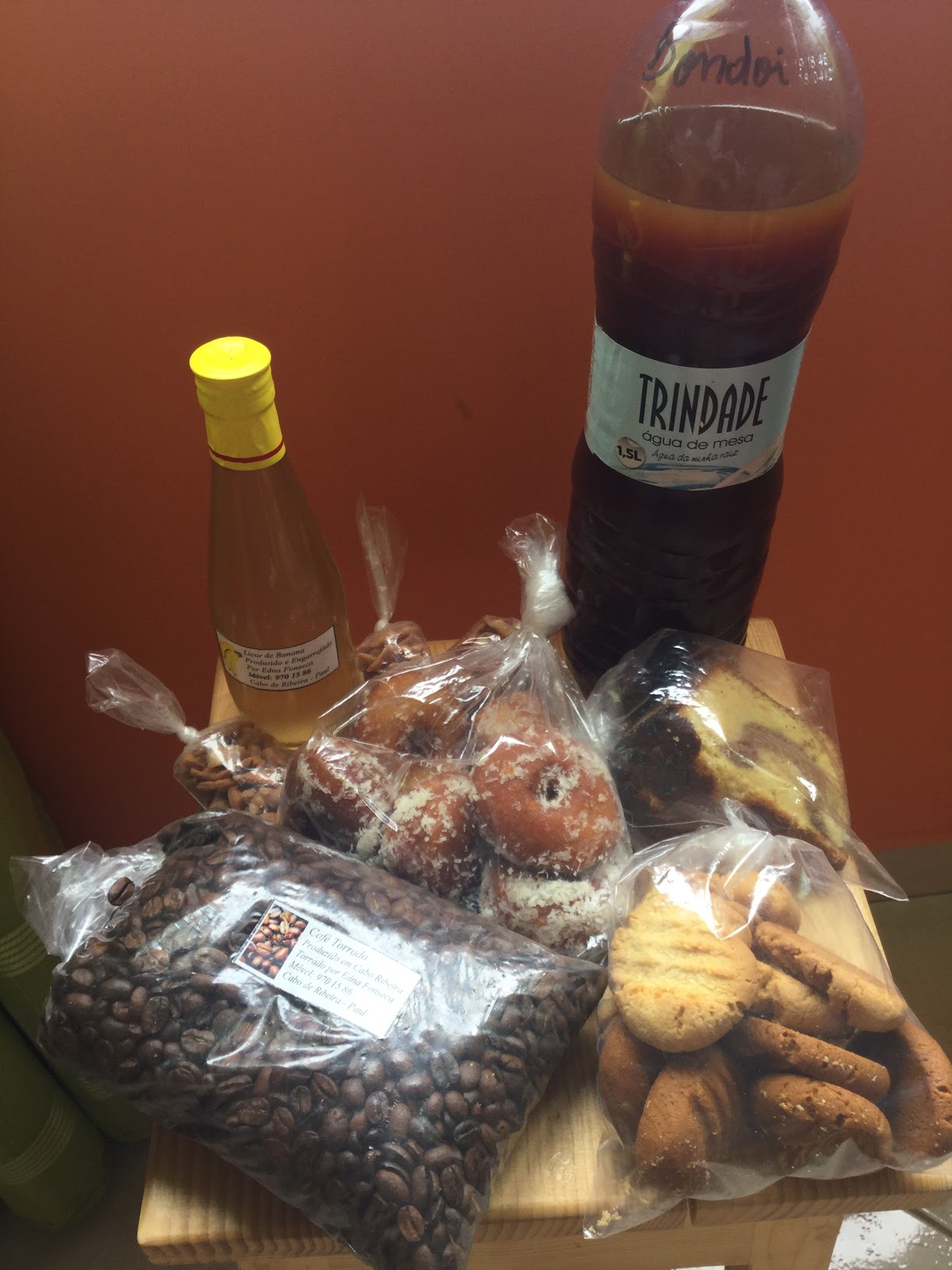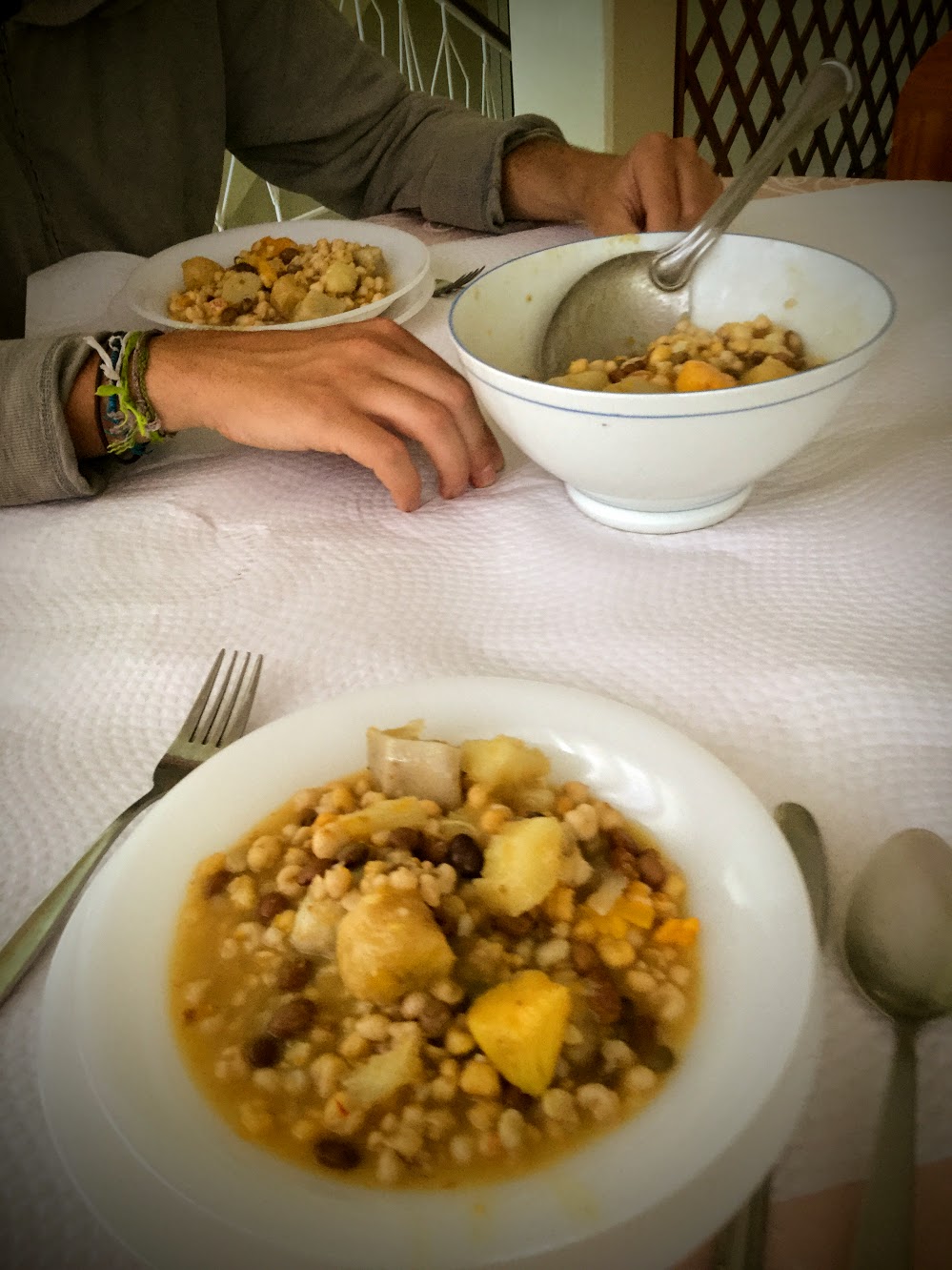
BOILED EGGS & BOB MARLEY
We could not leave without at least mentioning the eggs on the corner of the counter at the bar. It probably was not as late as it seemed in Pombas (Pigeons), but the proceeding days that had melted into this night were by any and all measures full ones.
Steven had loosely plotted our course to the lush, heavily terraced, nest-like haven of Valée Paul in the northern mountains and volcanic arrangements of Santo Antão. After a brief channel crossing by ferry, locating a bed (at a youth center for sex education in broad transition into a hostel), grogue and a fish and root vegetable dinner (with a man so well-versed in intricate statistical information of the island, it was hard to contain ourselves) we hitched a ride the following day toward a trail head in a truck bed buzzing with increasingly crisp air and school children snickering at any number of amusing, foreign aspects we exuded.
![]()
![]()
We parted ways with our ride at a locale that was densely shrouded in clouds, brisk and quiet — leaving the sunny, lively, seaside town of Porto Novo from the previous day to seem a million miles away and a lifetime ago. Finally, allowing ourselves to imagine what might be in store for us on this odyssey, feelings of overwhelming wonder of just where and what this place was began to ooze to the forefront. Hardly the first time this sentiment took hold of us, the tiny island chain that is Cabo Verde had our jaws dropped from first sound (enter: preparado), sight, smell and taste.
Forging ahead (as we do) on our trek with a load of uncertainty that was outmatched only by curiosity, we disappeared into the fog. The rambling but level trail led us through a forest of some kind of pine, to goats and the first precipitation we had witnessed in nearly three weeks — the entirety of our time on the islands of endless summer. We stopped beneath the tree that provided the slow, intermittent dripping to take a moment to silently allow for our new perspectives and appreciations for rainfall to sink into our hearts and minds as the drops sank into our skin.
![]()
![]()
Eventually moving on, we found ourselves in a young man’s yard. Friendly and brimming with thoughtful interpretations and a local knowledge that came from his intimacy with the island, we learned that the land and dwellings we stood on and around had been in his family for generations, three of which still resided there. The view emanated a phantasmal sort of feeling steeped in unending vantages and mystery. Reassuring us that our cloud-cladded path was indeed guiding us to our intended temporary destination, we initiated our descent.
![]()
Ferns, switch backs, a rogue dog and (more) goats, we eventually reached an altitude that permitted a thinning of the fog. We stopped, sang, admired and documented the first glimpse awarded to us of what lied inside Valée Paul.
![]()
![]()
![]()
![]()
After a lengthy but necessary hiatus in our journey, we turned the bend to have our breath taken and hearts stopped again, but this time even more.
![]()
We found ourselves unable to pinpoint what was most stunning, captivating…The magnitude and loftiness of the terraced mountain sides encircling us, the abundance of food growing, the dramatic peaks enclosing the colorful, cozy town beneath, the sight of the distant ocean, or the sudden, sweeping vastness of the whole scene after the uninterrupted finite visibility of the day.
![]()
![]()
What is this place? We asked ourselves yet again. Discovering the answer to that question led us to the most unimaginable places, people and occurrences. And even with that, still, to this day, we are left asking it again and again whenever we reflect on the moments lived and paths crossed in Cabo Verde.
The final descent into Valée Paul was, due to the optical entertainment surrounding us, slow, deliberate and wonder-filled. Reaching the beginning of the town, we passed through gardens, immaculately thatched structures, winding, narrow paths through dwellings and finally to the small, brightly painted store, Edna Fonseca.
![]()
![]()
![]()
![]()
We were instantly greeted and led inside by a woman, Edna, with an ever-present smile and a tone so welcoming and homey she must have felt the excess of stimulation and exhaustion seeping out of us.
![]()
Becoming aware again of our legs, we took seats in the store fully stocked with local coffee beans, home baked pastries and a plethora of untraditional vessels containing unfamiliar, intriguing liquids. In between conversations with Edna, her daughter, husband and neighbors, we were given the ultimate tasting of regional beverages of the valley. Grogue, having numerous fabricas in the valley, was first on the list. The menu continued with miel — a honeyed, syrup-like drink mixed with the sugar cane derived alcohol of the country — avocado leaf tea and bondoi — a drink still enveloped in mystery with the exception for its fail-proof ability to elicit a simultaneously shocked and sinister laugh from any Cabo Verdean.
![]()
Our journey carried us away from Edna’s and the assorted refreshments of her store to funnel our attention into locating some sort of shelter for us to rest our heads for the evening inside the now growing softly lit Valée Paul. After a few more thousand feet of broken-in, patchy cobblestoned pathway and a brief pause at Edna’s brother’s home — who had kindly offered to take us to a place to sleep — we found ourselves at Casa Maracuja.
![]()
![]()
![]()
![]()
From its palatial size, to its boldly painted signs denoting wireless internet, and the sizable swimming pool (in a place so enveloped in drought, one feels sacrilegious when showering), the dwelling emitted a marked impression of imposition and disconnectedness. The conversation that followed with the foreign owner persuaded Steven and I to seek different refuge, even with the darkness steadily falling around us.
![]()
![]()
Our resolve to continue onward led us to Grandma Georgina — our second Cabo Verdean Grandmother figure of our time on the islands. Calling above to us on the cobbled road, Grandma Georgina beckoned for us to climb down to her house. Scaling narrow steps, tiny garden passages and several twists and turns, we emerged into Georgina’s kitchen just as the sun sank out of sight.
As luck and beautiful connections continued to weave themselves into our time in Cabo Verde, we communicated (verbally and otherwise) with Georgina a while and were introduced to her daughter and grandson while stovetop aroma’s and a myriad of mounted family portraits encircled us. Piecing together our lack of sleeping arrangements, Georgina insisted she lead us to a place owned by her friends to spend the night. Implicitly placing all trust in Grandma Georgina, while simultaneously realizing there existed no room for objection as Georgina was already well on her way up and out of her rambling yard, we followed.
![]()
After an entertaining, extended and extreme banter and belly laugh exchange (the kind developed after attaining a familiarity that requires not one word be spoken in order to be understood) between Georgina and her friends at our new found shelter, we ourselves were introduced and welcomed as family — a sentiment now permanently engrained in our hearts as the Cabo Verdean way. We ascended to the evening’s lodging and connecting rooftop perch that would reveal itself to be an overlook into one of the most sweeping, lush and dramatically karst landscapes imaginable.
![]()
![]()
Slowly…steadily…gracefully...reassuringly she emerged from behind the steep mountains edging our cozy abode. The moon was partially illuminated, but her energy was undeniable. An isolated darkness matched with a most silvery, gleaming moonlight cast out into every nook and cranny of the secluded environment.
The day turned night was far from ending for us as our stomachs gurgled with the void of only being filled with the Porto Novo breakfast that digested eons ago and the treats from Edna’s. Following the theme of the day, we left our digs and continued down more winding pathways in search of a store or restaurant.
We came across a home with an arrow and sign indicating food if followed, while at the same time intersecting paths with a man overflowing with conversation and a tummy brimming with grogue. He swayed and slurred a bit here and there while slowly, yet also somehow boisterously, showing us with intermittent French anecdotes the way to the rooftop restaurant. The restaurant, which was was to be the backdrop for one of the most mouthwatering bowls of cachupa we would consume during the entirety of our time in Cabo Verde, was owned by the same family Grandma Georgina had guided us to. Along with the delicious cachupa — the Cabo Verdean national dish of root vegetables, beans and collosal corn kernels — we sipped glasses of white wine from the island of Fogo — one of the seven in the chain — that houses an active volcano and, in that, volcanic soils perfect for growing grapes.
![]()
The early hours of the following day revealed the height and severity of the craggy peaks that fringed the valley. It became clear how and why the people’s who’s paths we had crossed since entering the valley exuded extreme composure and trust — even from the first meeting of the eyes. It came from their intimacy with seclusion and being at the immense mercy of the global mother (and her at times not easily traversed or inhabited landscape). The people around you, your family. The rainfall, ironically, your lifeboat. The terrain, your canvas and tool to work with — or succumb to.
![]()
![]()
![]()
![]()
![]()
![]()
![]()
![]()
Rooftop reflections and stretches proceeded a meal of fruit, breads, cheese and juice to break the night’s fast. Saddled up with Cabo Verdean cookies, cakes and an ever-increasingly fermenting Bondoi (enter mid-hike delerium), we set out for a visit to a fabrica of grogue to learn about the drink’s traditional production. Having indulged in a cup — or so — of grogue and learning its way of going hand in hand with any occasion or amount of time spent with the people of Cabo Verde, we were infinitely curious about its origins and processes.
![]()
![]()
The narrow, rugged, meandering paths reemerged to the forefront of our realities as we made our way. Upon arrival, Steven and I were graciously greeted by Joao — Edna’s brother — and promptly handed a cup of their fabrica’s product. Natural, straightforward and without pretense, the workings of the grogue fabrication entailed a mound of harvested cane, boiling water, a production of several metal pipes and containers and three barefeeted men all with seemingly specific and well-mastered jobs.
![]()
![]()
![]()
![]()
![]()
![]()


